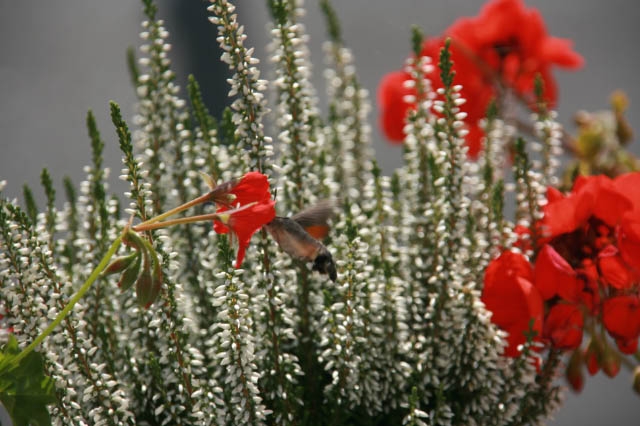Posts Tagged: Germany
Diagnosing Tree Problems Can Be Colorful
As a Master Gardener we are frequently presented with problems that various gardeners face. Sometimes people will bring in pictures or even samples of the plant they are dealing with. Sometimes figuring out the problem is simple, other times definitely not.
We have learned to ask a series of questions to help tease out clues which may help us diagnose the problem. We also have many references and resources which we can use to help us narrow down the possibilities.
When we were in Germany we came upon what appeared to be an outbreak. First describe what you see. The manifestation seems to involve only the trunks of trees not the branches. The problem seems to be an enveloping, raised, almost furry growth. The coloration is quite variable, not only from trunk to trunk, but within a single trunk. We also saw that the outbreak did not limit itself to a single species but seemed to cross into several genera in the area of older Wiesbaden.
Next find out the history or progression of the symptoms.Find out what the gardener has done or not done. I didn't speak German well enough to ask questions, but I suspect if I had the answer would have been that the manifestation appeared overnight. Lastly, hit the books! In the last few years there have been similar outbreaks in cities and towns across the globe. They have even experienced an outbreak on the campus of UC Davis.
The manifestation is called..... yarnbombing. Some industrious knitters knit up multicolor sleeves which are generally put up and sewn together in the dead of night. The decoration is not necessarily limited to trees; we saw a few lamp posts adorned as well. It's a wonderful surprise for a town's inhabitants. In the dead of winter, under generally gray skies, it made for a wonderful pop of color.

Yarnbombed trees. (photo by Keith Arrol)
It's a Bird, It's a Plane!
One of the many special joys of gardening is coming face to face with hummingbirds. I love to watch them sip from flowers or just perch and survey their territory. That's why Keith and I were thrilled to see a tiny hummingbird sampling the flowers at a flower box at a restaurant in Rudesheim, Germany. He was the tiniest thing we had ever seen. He was brown and rust and white and hummed and hovered enchantingly.
I vaguely remembered that there was a hummingbird referred to as a bee hummingbird, so that evening I lhit the Internet. No, the bee hummingbird is from Cuba and is a striking blue color which this creature was not. As I researched I found that there are no hummingbirds in Europe, only the New World. Interestingly about two years ago they did find hummingbird fossils near Frankfurt Germany. I did find out there was a zoo near Rudesheim that had a hummingbird enclosure; perhaps one had escaped.
Then I found a question to a bird site where someone else had seen a small hummingbird in Germany. The expert gently suggested that they had perhaps seen a European hummingbird hawk moth, Macroglossum stellatarum. No Way! I was a biology major. I'm a Master Gardener for crying out loud. I'm not going to mistake a moth for a bird. Nevertheless I did Google the European hummingbird hawk moth and sure enough that was exactly what my husband and I saw. The moth flies during the day time, hovers and even has the hummm of the hummingbird. It's incredible. They say it's an example of convergent evolution that they have ended up so similar. Take a look at the pictures that my husband took and see if you would have been fooled too.

Macroglossum stellatarum. (photos by Keith Arrol)

Note the antennae, hummingbirds don't have these.

hummer moth
Sudfriedhof Cemetery
Recently my husband Keith and I were in Wiesbaden, Germany to visit "the world's greatest grandchild", Emily. While there, we made a pilgrimage to the Sudfriedhof Cemetery in search of the grave of Manfred von Ricthofen, alias the Red Baron, the World War 1 flying ace.
We had to wander for quite some time through the cemetery before we found it. I didn't mind spending so much time there because I was fascinated by the graves. Many of the graves or family plots were decorated. I'm not talking about a bouquet of flowers. These plots were landscaped miniature gardens. Some had ground cover, shrubbery, bedding plants, and stepping stones; little postage stamp gardens.
Some were tended by families and others by gardening services. There were large water troughs and racks of watering cans scattered about in case you needed to supplement the natural rainfall. The whole effect was very peaceful and charming. We did finally locate the Baron's grave and Keith took lots of photos, but for me it was a little anticlimactic cause I had already taken these photos.

Graves with their gardens. (photos by Karen Metz)

grave 2

grave 3
A 'Page' of History
Honey bee geneticist Robert E. Page Jr. is in good company. Good company, indeed. Think scientists...

Robert Page

Specialized Bees

Frame of Bees

